- Climate
Nick Ferris visits families forced from their home due to flooding in Ethiopia’s northern Afar region – who say they have been largely deserted by humanitarian organisations as aid cuts have taken hold this year
Tuesday 25 November 2025 12:41 GMTComments
 CloseEthiopians on the brink as they endure climate catastrophe with almost no support
CloseEthiopians on the brink as they endure climate catastrophe with almost no support
Sign up to the Independent Climate email for the latest advice on saving the planet
Get our free Climate email
Get our free Climate email
 Email*SIGN UP
Email*SIGN UPI would like to be emailed about offers, events and updates from The Independent. Read our Privacy notice
For the 900 residents of Kebena village, in the northeastern Afar region of Ethiopia, 2025 has been a year of one calamity after another.
First, there were earthquakes at the start of the year, tearing through homes and forcing families to relocate to a camp four miles down the road. “The health facility, school, and homes were all destroyed, and a lot of the community remain traumatised by what happened,” explains Mehamed Ali-Sisa, the village leader.
After the community’s initial evacuation to the camp, drought conditions, caused by a lack of rainfall during the February to May rainy season, meant villagers had to travel far and wide with their cattle, camels and sheep in search of pastures.
When the rains finally came during the second rainy season, which runs from June to September, they came too hard and fast, leading to the mighty Awash river bursting its banks and flooding what was left of the village.
At the time of The Independent’s visit to Afar, Kebena’s buildings remain knee-deep in floodwaters, and the villagers are still stuck in the camp. “We have been stuck here in the camp for nine months now, after these three consecutive disasters,” says Mehamed. “There are huge worries around getting basic services like health, education, and food.”
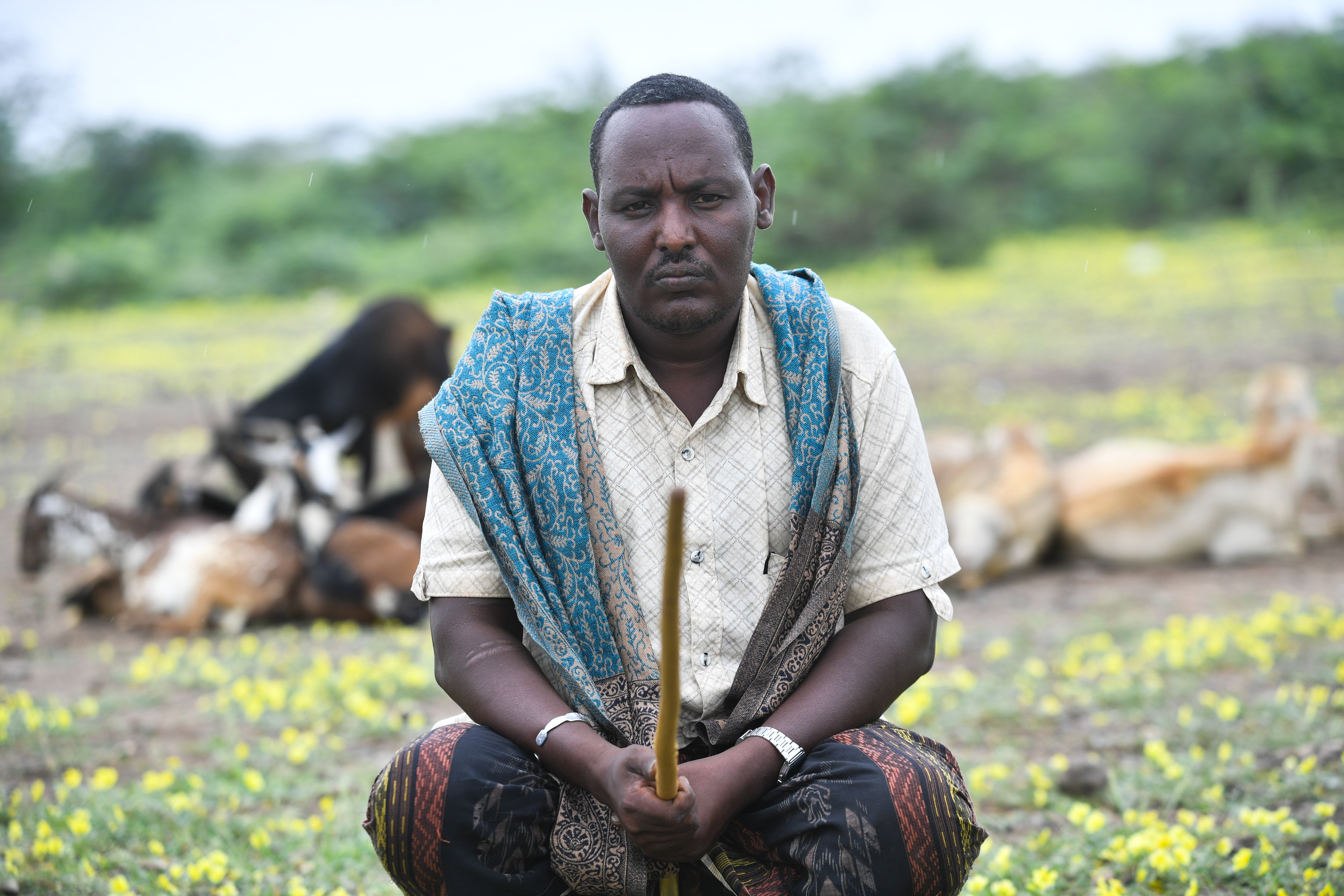 open image in galleryMehamed Ali-Sisa, a father-of-five and leader of the 900-strong village of Kebena, told The Independent that, following three natural disasters and the gradual withdrawal of NGOs this year, he is worried about “basic services like health, education, and food” (Michael Tewelde/WFP)
open image in galleryMehamed Ali-Sisa, a father-of-five and leader of the 900-strong village of Kebena, told The Independent that, following three natural disasters and the gradual withdrawal of NGOs this year, he is worried about “basic services like health, education, and food” (Michael Tewelde/WFP)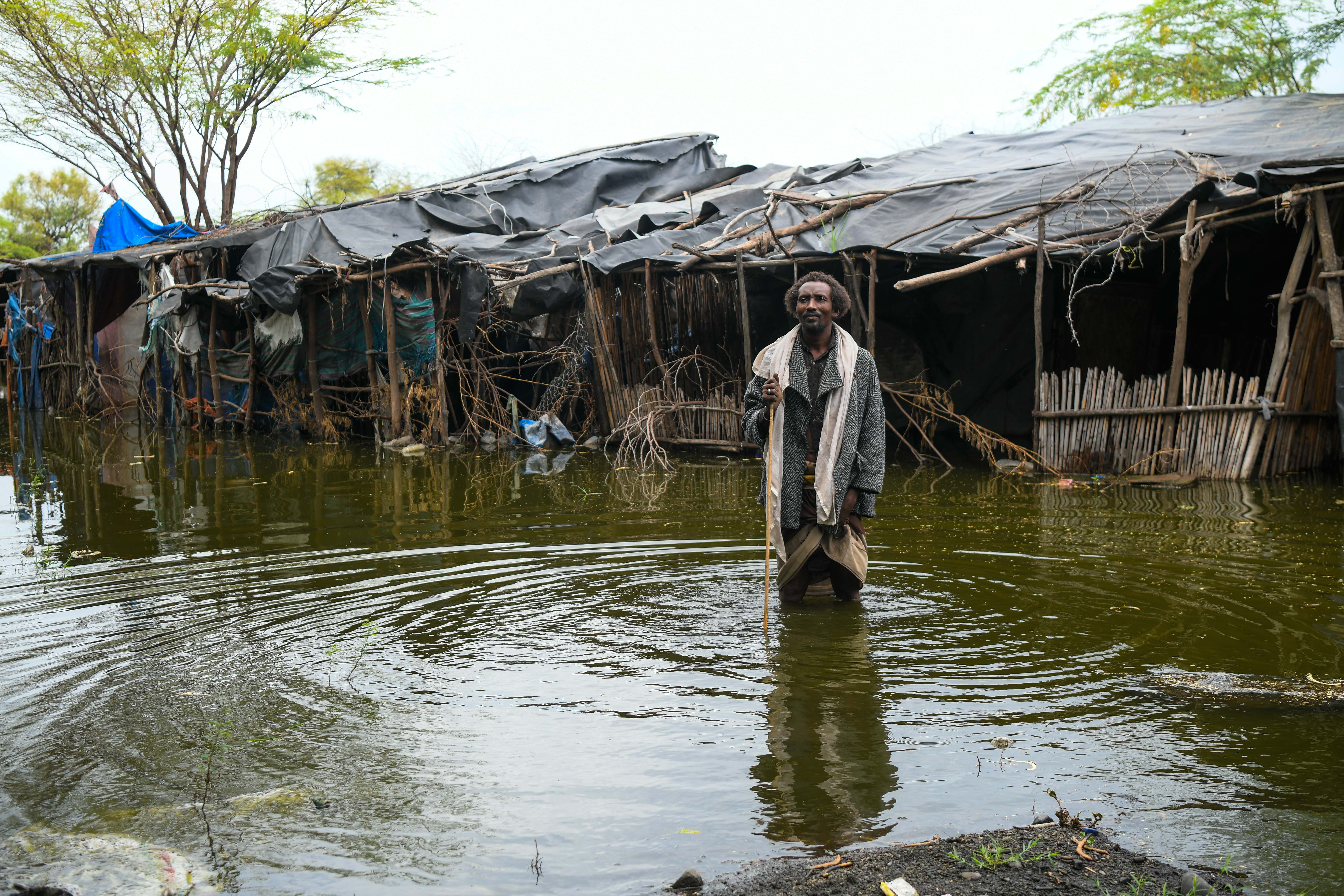 open image in galleryThe several hundred households of Kebena are among more than 5,000 households impacted by the flooding. Pictured is 40-year-old Alo Baniya in front of his flooded house (Michael Tewelde/WFP)
open image in galleryThe several hundred households of Kebena are among more than 5,000 households impacted by the flooding. Pictured is 40-year-old Alo Baniya in front of his flooded house (Michael Tewelde/WFP)The households of Kebena are among more than 5,000 households affected by the flooding, which is an event becoming more common thanks to climate change. Thousands of hectares of farmland have also been flooded, while key pieces of farming infrastructure including irrigation canals have also silted up, the report finds.
Kebena’s income and food security has been particularly threatened, with around one-fifth of the village’s livestock being killed as the flooding hit, their bodies having been weakened by the drought conditions earlier in the year.
This has all been compounded by the fact that this extreme weather has coincided with the Donald Trump in the US – traditionally the largest donor to Ethiopia – and other countries slashing their aid budgets, which has squeezed the operations of humanitarian agencies on the ground. This has left communities like Kebena unable to access clean drinking water, leading to water-borne diseases, and without a reliable food supply or a local medical service.
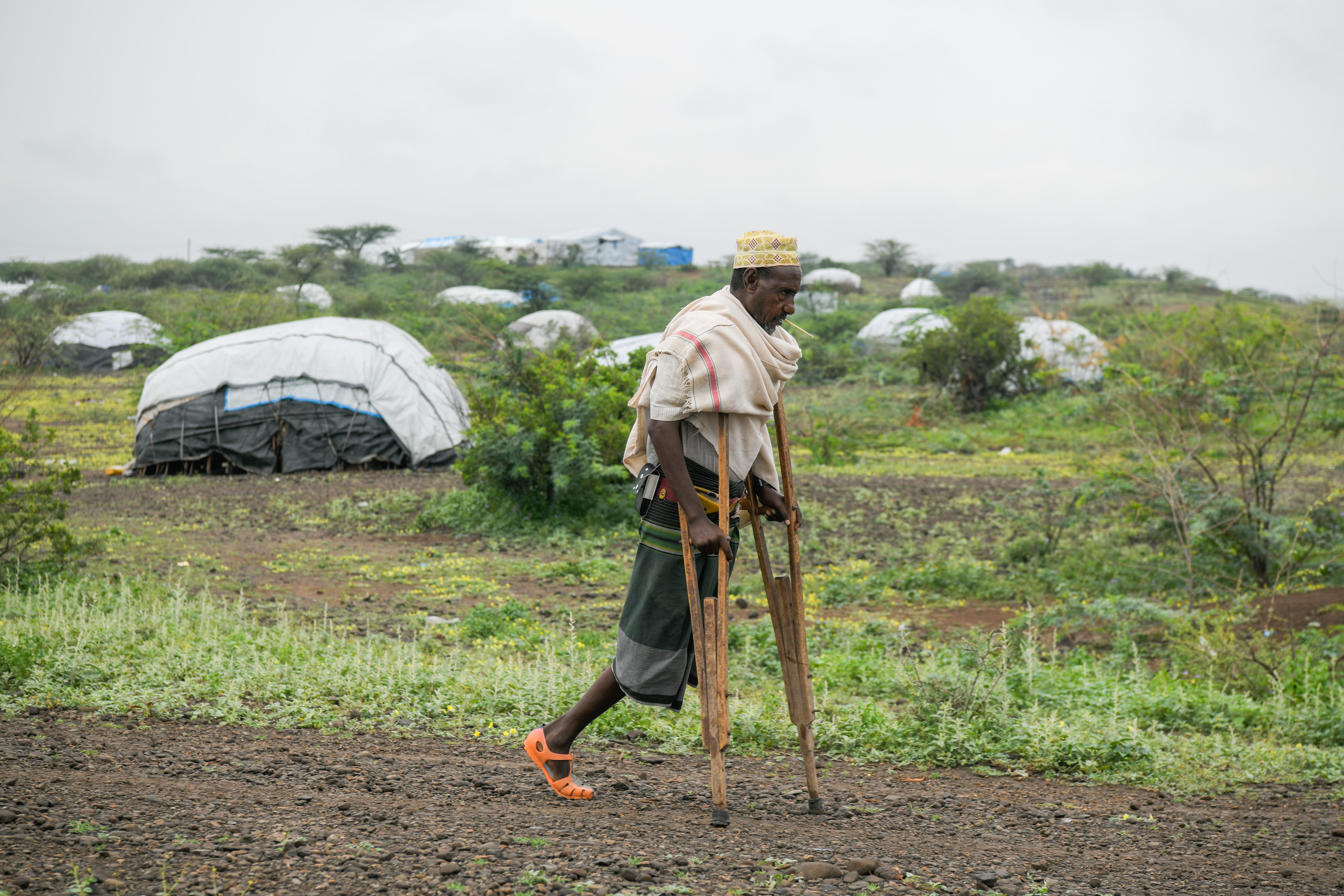 open image in galleryKebena’s income and food security has been particularly threatened by the fact that around one-fifth of the village’s livestock were killed by the floodwaters. Pictured is the Internally Displaced Persons (IDP) camp housing the residents of Kebena (Michael Tewelde/WFP)
open image in galleryKebena’s income and food security has been particularly threatened by the fact that around one-fifth of the village’s livestock were killed by the floodwaters. Pictured is the Internally Displaced Persons (IDP) camp housing the residents of Kebena (Michael Tewelde/WFP)“At the start of the year we were supported by government... but as time has gone on NGOs [and aid charities] have gradually left,” Mehamed says. “We are in a very dangerous kind of situation, which has left us feeling helpless.”
The only organisation that the villagers said was still supporting them at the time of The Independent’s visit was the Norwegian Refugee Council, which had provided a cash transfer that the community was using to purchase food. But their water supply had become the dirty floodwaters of the Awash River itself, after humanitarian organisations were no longer supporting them with water deliveries.
Already-stretched NGOs have been unable to offer sufficient support to the community, The Independent also found, with the story of the village reflecting how humanitarian systems across the world are struggling to deal with climate-driven disasters in the wake of aid cuts.
Kebena’s story reflects a trend of climate-driven humanitarian disasters becoming more and more common in vulnerable countries like Ethiopia, experts warn – with the money available to address those disasters becoming increasingly squeezed.
The number of internally displaced people (IDP) globally has more than doubled globally since 2018 to 83.4 million at the end of 2024, with nearly half – or 38.8 million – in Sub-Saharan Africa, driven by both natural disasters and conflict.
The Internal Displacement Monitoring Centre, which publishes these numbers, has warned that “climate change is making extreme weather events that trigger displacement more frequent and more intense” – while the World Bank has projected that by 2050, climate change could create more than 216 million IDPs, if the world does not turn the tide on emissions.
More volatile weather, less support available
Lying in one of the most seismically-active regions of the world, earthquake activity is nothing new to the villages of Afar. Droughts and flooding events are not uncommon for the region’s pastoral communities, whose way of life has been long-adapted to extreme weather patterns.
But data from organisations tracking extreme weather events, as well as testimonies from villagers, reflect how already-difficult weather patterns are becoming ever more extreme and ever harder to manage. Specifically in Afar, the pattern of drought and flood has become all too common, according to Mahomed. “It seems to be falling like this every year now,” he says.
According to 70-year-old Hawa Harbu, the weather is extremely different now to how it was when she was a girl. “We used to hear sometimes that people would lose a certain amount of cattle, or a certain amount of sheep - but that would be every ten years,” she explains. “Now it seems to be every two years or even every year.”
Hawa, a smiley mother of eight in a striking blue and orange dress, shows The Independent around her cramped, makeshift hut, which is made largely from blue and white sacking provided by UN agencies, and requires a serious stoop to navigate within. At the moment, she lacks a mattress, cooking utensils, and food supplies, she says.
“I never would have dreamed that the Awash River would flood our village,” she continues. “The future feels very unpredictable… all we can do is pray and keep praying.”
Habtamu Ebrie, who leads on the UN’s World Food Programme work on livelihoods and climate change resilience in Afar, concurs that the climate impacts described by the villagers are happening across the region “Climate change is a huge issue here in Afar, driving two extremes: drought when there is not enough rain, and flooding, which erodes the soil and degrades the performance of land,” he says.
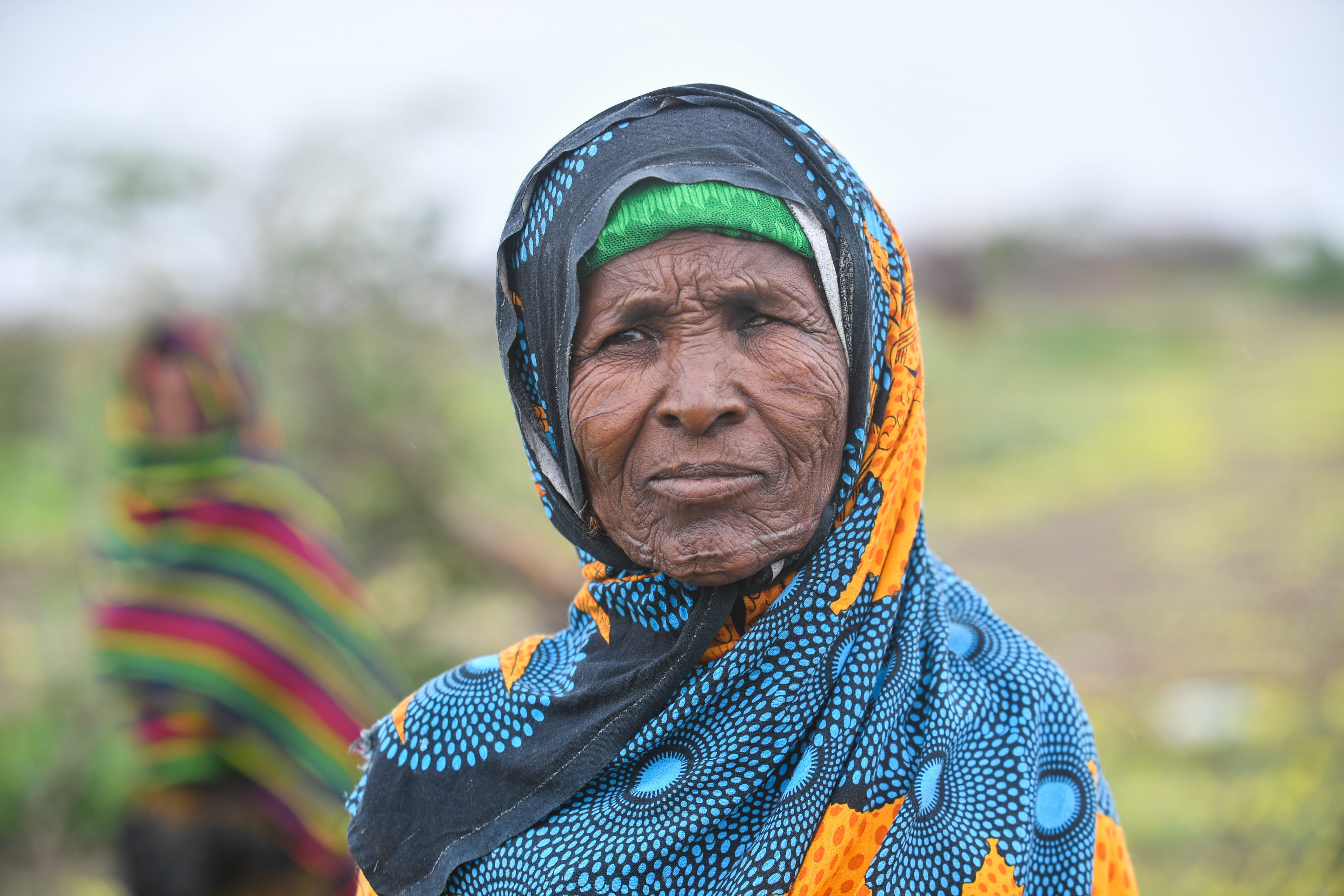 open image in galleryAccording to 70-year-old Hawa Harbu, weather patterns are extremely different now to how it was when she was a girl (Michael Tewelde/WFP)
open image in galleryAccording to 70-year-old Hawa Harbu, weather patterns are extremely different now to how it was when she was a girl (Michael Tewelde/WFP)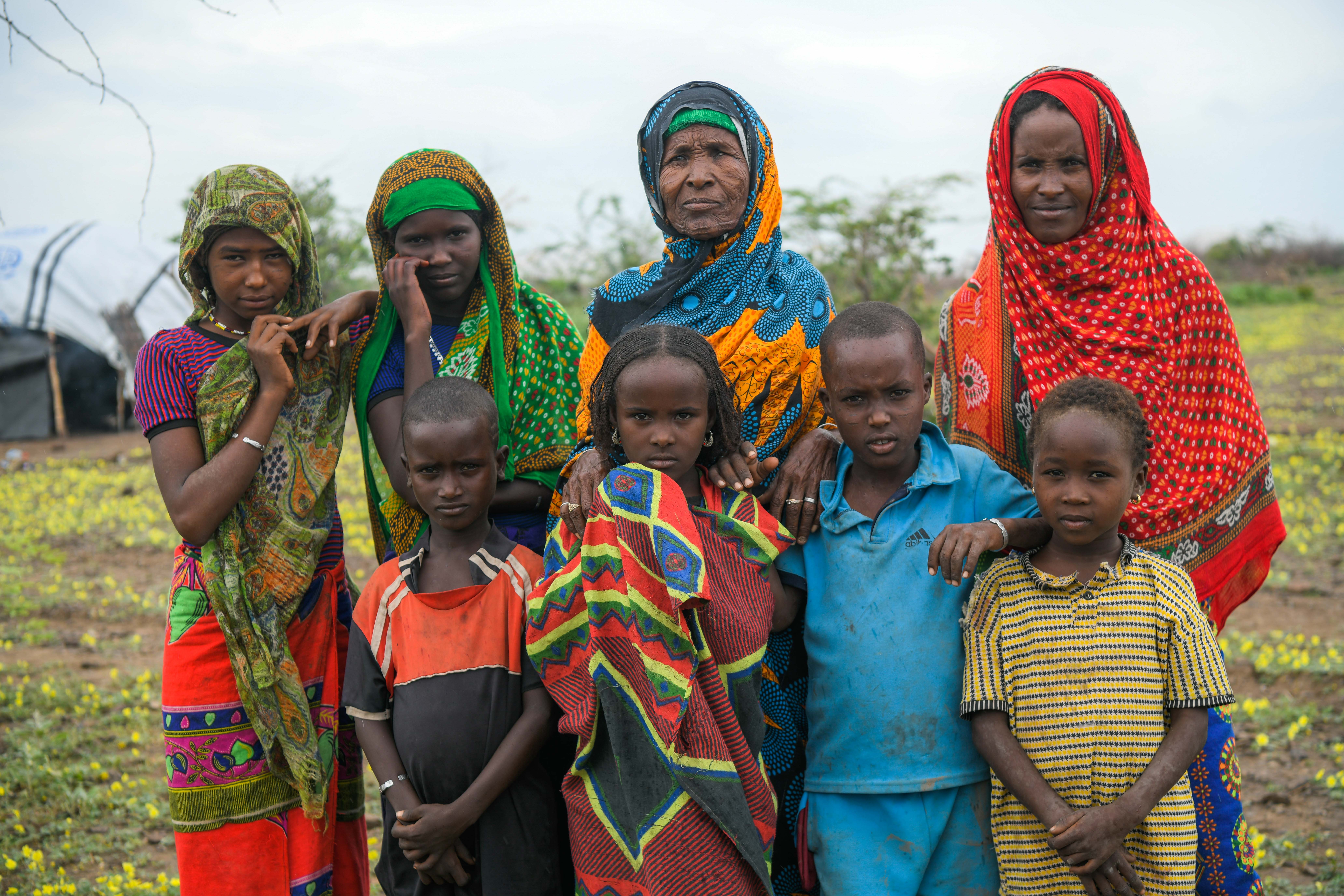 open image in galleryHawa is pictured here with various members of her family. “The future feels very unpredictable… all we can do is pray and keep praying,” she said (Michael Tewelde/WFP)
open image in galleryHawa is pictured here with various members of her family. “The future feels very unpredictable… all we can do is pray and keep praying,” she said (Michael Tewelde/WFP)In the town of Semera, some six hours up the road from Kebena, lies the office of the Afar office for the UN agency for the Coordination of Humanitarian Affairs, or OCHA, where a three-person team leads coordination of humanitarian efforts in the region. There, officer-in-charge Kebir Mohammed, painted a bleak picture of just how much the region, which is largely populated by climate-vulnerable pastoralist communities, has been impacted by aid cuts.
In all, some 25 NGOs have completely withdrawn from Afar this year, leaving significant gaps in humanitarian services, and stretching the capabilities of remaining NGOs. “We have had to mitigate impacts as best we can, but sometimes events have happened that are beyond our capacity to respond,” he says.
One organisation in the process of withdrawing from Afar is the International Committee for The Red Cross, which - according to economic coordinator Pietro Orlandi - had a programme vaccinating millions of animals in the district against diseases like Anthrax, which is ending this year. “The pattern we are seeing is the total disappearance of some NGOs in some remote areas, leaving only the largest ones struggling to fill the gaps,” he says.
According to OCHA’s Mohammed, all areas targeted by humanitarian workers in Afar – including health, food, gender, sanitation, and nutrition – have been impacted by cuts. “I am particularly worried about the critical need for nutritional support in the district,” he adds, revealing that the number of mobile nutrition clinics - which serve a critical role following nomadic pastoralist communities around - has been cut from 44 to just 16, putting the lives of young children in particular at serious risk.
Filthy water, malnourished babies
For Alo Baniya, a 40-year-old father of seven from Arab Halla Village, the impact of aid cuts in Afar have been felt all too close to home. The Independent found him squatting in a shelter on the side of the road not far from the camp not far from Kebena, right next to his house, which remains full of water following the floods from Awash River.
“We did not realise the floods were coming - and when they did, water just filled our house and it started to collapse. So we ran out here to this spot on the roadside,” he says. “Everyone in the village’s property has been flooded, and it’s the same in the other villages around here.”
Despite the fact that Alo’s situation remains critical, he is not currently receiving any support from humanitarian organisations: “At first NGOs came and found us on the side of the road, but now there is nothing,” he says.
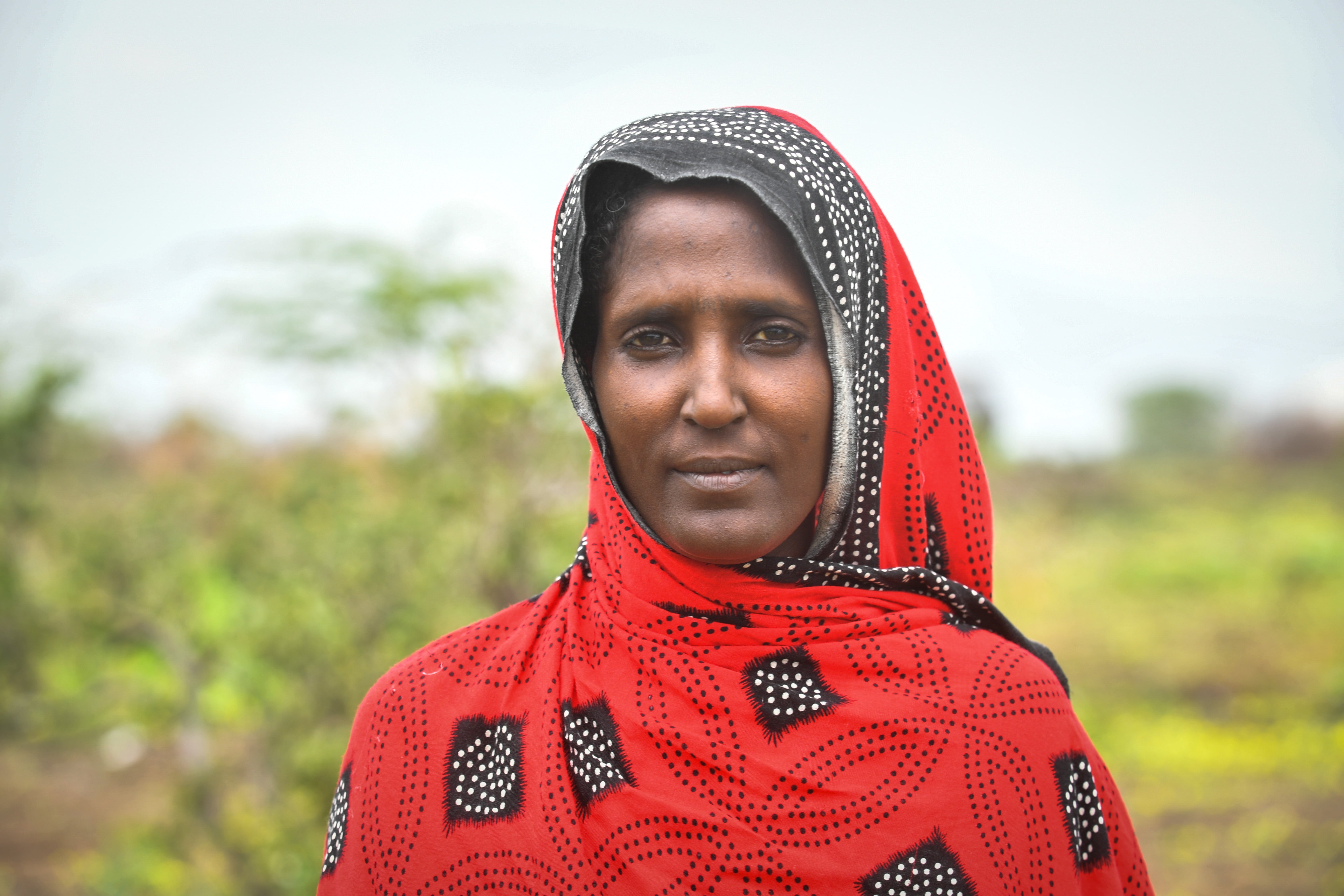 open image in galleryZahra Deta, a mother of five, said that access to water was her biggest concern, with her children having fallen sick after drinking from the Awash River (Michael Tewelde/WFP)
open image in galleryZahra Deta, a mother of five, said that access to water was her biggest concern, with her children having fallen sick after drinking from the Awash River (Michael Tewelde/WFP)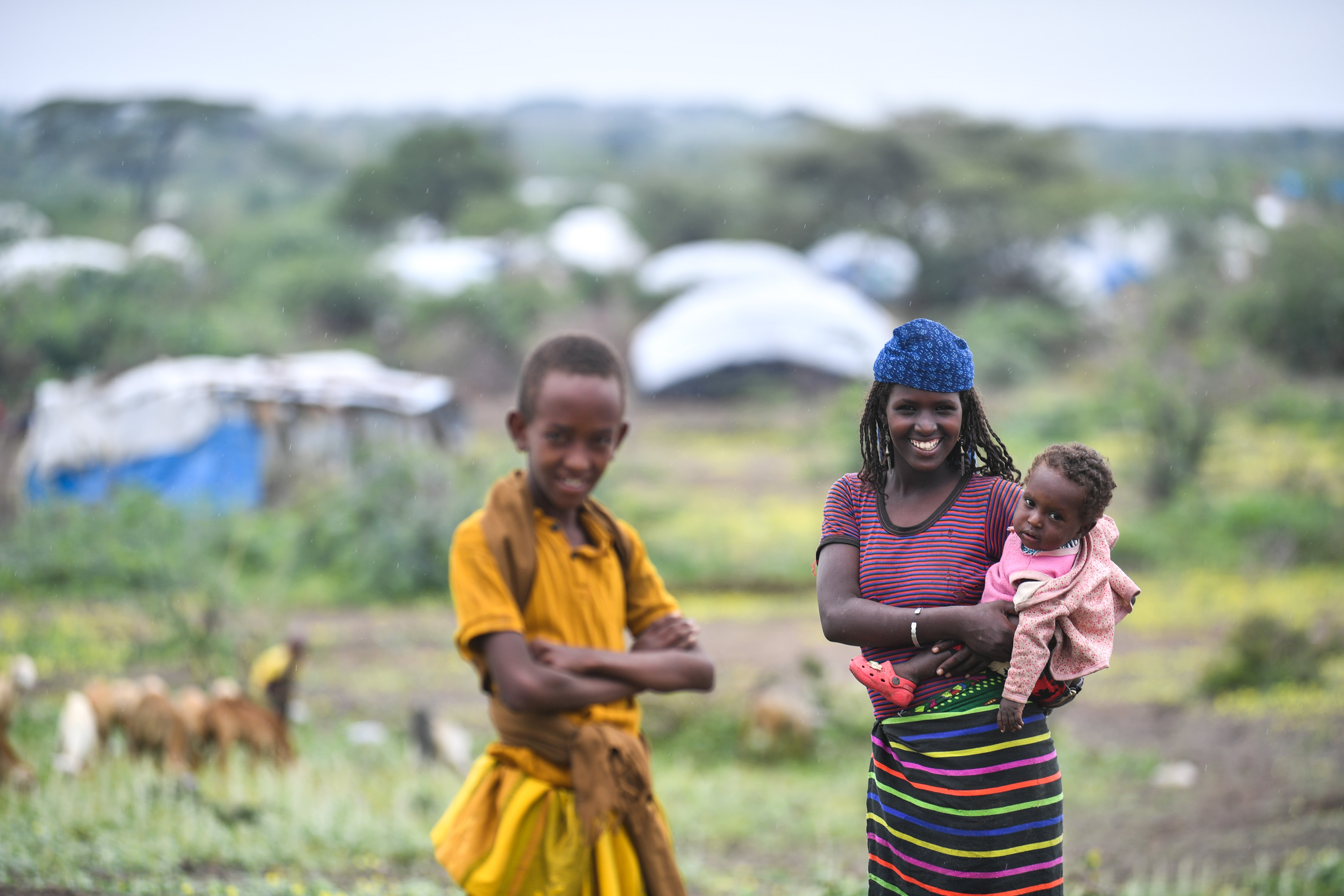 open image in galleryThe villagers no longer have access to a local health service, while food is also a growing concern. Pictured is the Internally Displaced Persons (IDP) camp housing the residents of Kebena (Michael Tewelde/WFP)
open image in galleryThe villagers no longer have access to a local health service, while food is also a growing concern. Pictured is the Internally Displaced Persons (IDP) camp housing the residents of Kebena (Michael Tewelde/WFP)Back among the villagers of Kebena, the biggest challenge since humanitarian organisations have withdrawn has been around the water supply, according to Mehamed. In the village there is a borehole, he says, but in the camp there is no ready supply of clean water.
“There is currently no clean drinking water, so community members are forced to go to the river to use the muddy water,” he explains. “This has created health problems including a skin-itching among children, and led to serious stomach problems.”
Free health check-up and medication services that used to be offered by NGOs are no longer available, Mehamed continues, leaving them forced to travel to a nearby town to receive healthcare, and spending money that they do not have to spare. As well as losing their livestock, the villagers also currently do not have access to their farms, which remain flooded. “We remain dependent on aid to survive,” he says.
Zahra Deta, a mother of five, shares similar concerns: “Access to water has been the biggest challenge. My children have fallen sick after drinking from the river,” she says. Unable to access the maize and onion crops that she used to farm, the coming school year has become a big stress. “We are unable to afford scholastic materials, and we do not know if school meals will still be provided in the temporary school,” Zahra says.
 open image in galleryA couple of hours drive from Kebena, 50-year-old Assiah, who has been displaced from her own village, Egle, due to floods, said that food supplies were the biggest concern in her community (Michael Tewelde/WFP)
open image in galleryA couple of hours drive from Kebena, 50-year-old Assiah, who has been displaced from her own village, Egle, due to floods, said that food supplies were the biggest concern in her community (Michael Tewelde/WFP)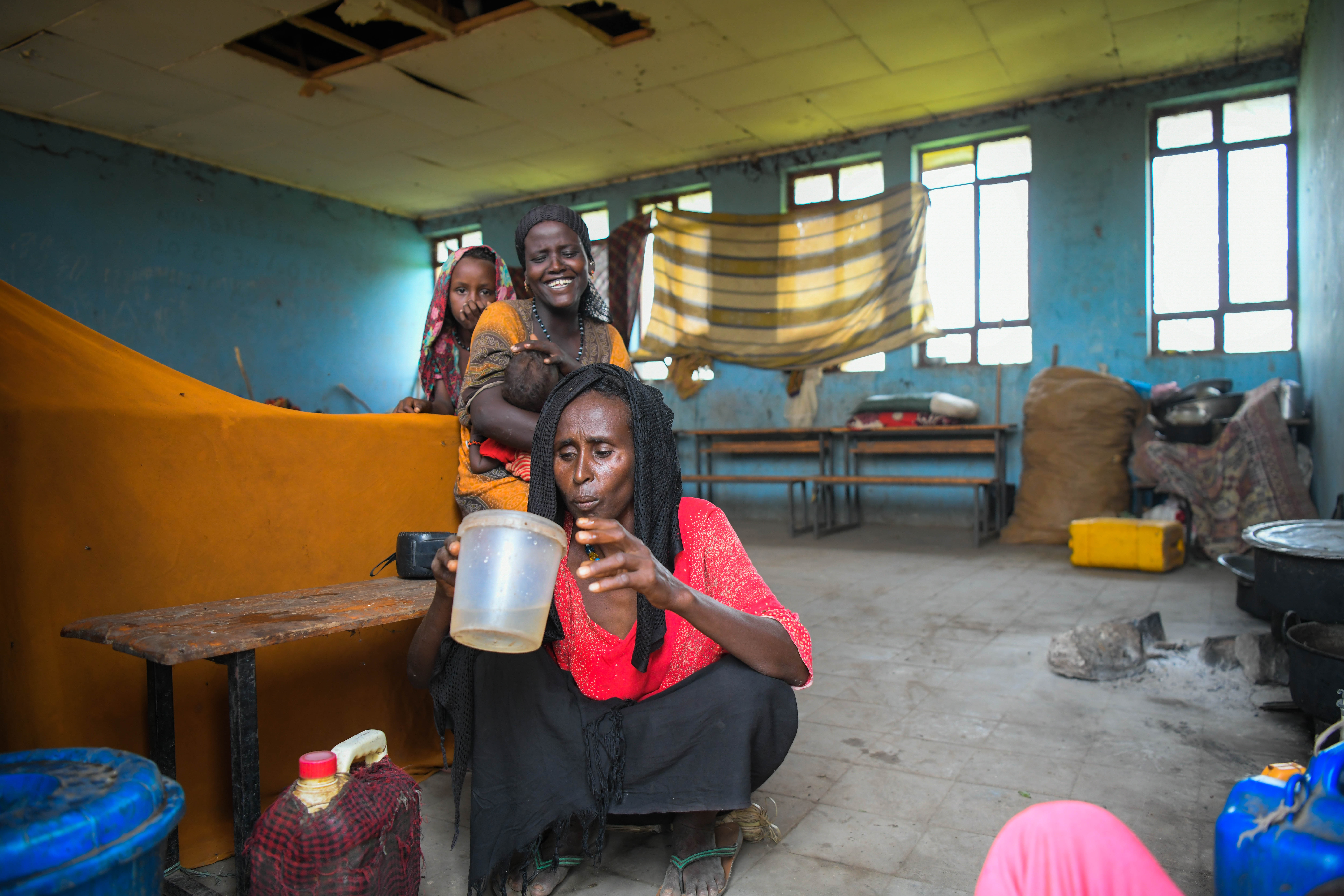 open image in galleryThe residents of Egle have been forced to live in an overcrowded school building (Michael Tewelde/WFP)
open image in galleryThe residents of Egle have been forced to live in an overcrowded school building (Michael Tewelde/WFP)A couple of hours drive from Kebena, the families from another village, Egle, have been staying in a school for the past two months after their own homes were flooded. Multiple families were staying in schoolrooms in cramped, dirty conditions, The Independent found, while the sight of thin, malnourished state of babies and breast-feeding mothers in the village spoke to the fact that the biggest challenge here has been around food security.
“We do not have enough food here to feed our family,” says 50-year-old Assiah, a mother of seven. “We are relying on people whose houses and farms were not flooded to share their food - and we also have no cooking materials or utensils here as we were forced to leave them at our homes.”
Mother-of-four Amina adds that the fact that they are staying in the overcrowded school is also presenting problems around food: “When it rains, for example, we cannot prepare food as there is no shelter for us to work under,” says the 35-year-old.
At the time of The Independent’s visit, the community was also facing serious uncertainty around their future in the school buildings, given the fact the coming school year was set to force villagers to leave that location.
 open image in galleryThe sight of thin, malnourished state of babies and breast-feeding mothers in the village spoke to the fact that the biggest challenge here has been around food security (Michael Tewelde/WFP)
open image in galleryThe sight of thin, malnourished state of babies and breast-feeding mothers in the village spoke to the fact that the biggest challenge here has been around food security (Michael Tewelde/WFP)In time, the floodwaters will subside and communities will be able to return to their villages. But events such as this are set to only become more common in the future with climate change, with impacts set to worsen as NGO budgets continue to be squeezed.
With the UN’s humanitarian agency continuing to monitor and oversee humanitarian efforts from its headquarters in Semera, NGOs could fairly easily be slotted back into regional aid efforts were they to return to Afar. But for the time being, the OCHA officers there are in the unenviable position of knowing both exactly what humanitarian needs there are in the region – as well as the shrinking share of that which humanitarian groups are able to meet.
Kebir Mohammed, who works for the UN says: “The reality that we are seeing… you know, it really is heartbreaking,”
This article was produced as part of The Independent’s Rethinking Global Aid project
More about
EthiopiafloodingDroughtRethinking Global AidJoin our commenting forum
Join thought-provoking conversations, follow other Independent readers and see their replies
Comments



